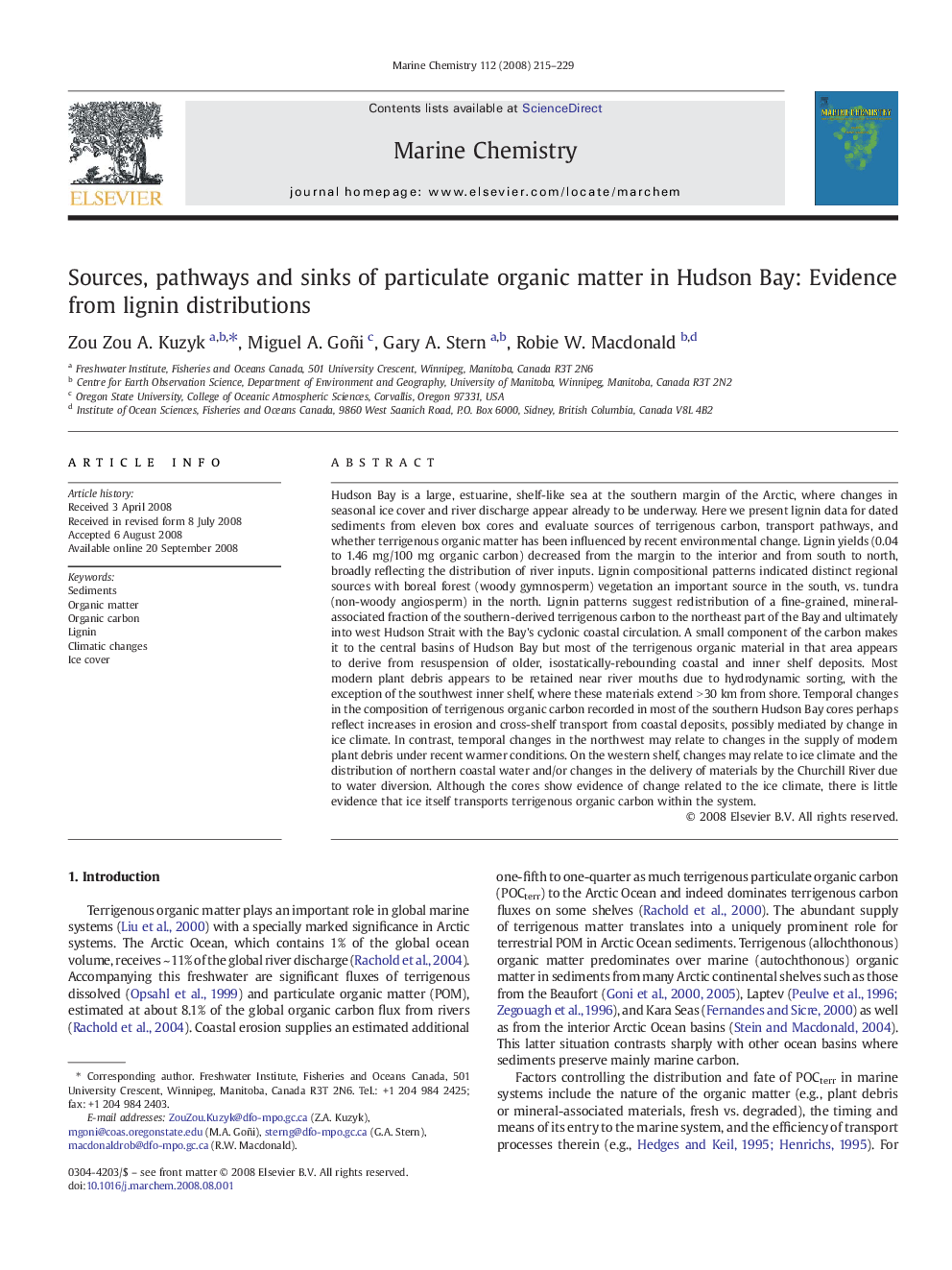| کد مقاله | کد نشریه | سال انتشار | مقاله انگلیسی | نسخه تمام متن |
|---|---|---|---|---|
| 1261958 | 1496716 | 2008 | 15 صفحه PDF | دانلود رایگان |

Hudson Bay is a large, estuarine, shelf-like sea at the southern margin of the Arctic, where changes in seasonal ice cover and river discharge appear already to be underway. Here we present lignin data for dated sediments from eleven box cores and evaluate sources of terrigenous carbon, transport pathways, and whether terrigenous organic matter has been influenced by recent environmental change. Lignin yields (0.04 to 1.46 mg/100 mg organic carbon) decreased from the margin to the interior and from south to north, broadly reflecting the distribution of river inputs. Lignin compositional patterns indicated distinct regional sources with boreal forest (woody gymnosperm) vegetation an important source in the south, vs. tundra (non-woody angiosperm) in the north. Lignin patterns suggest redistribution of a fine-grained, mineral-associated fraction of the southern-derived terrigenous carbon to the northeast part of the Bay and ultimately into west Hudson Strait with the Bay's cyclonic coastal circulation. A small component of the carbon makes it to the central basins of Hudson Bay but most of the terrigenous organic material in that area appears to derive from resuspension of older, isostatically-rebounding coastal and inner shelf deposits. Most modern plant debris appears to be retained near river mouths due to hydrodynamic sorting, with the exception of the southwest inner shelf, where these materials extend > 30 km from shore. Temporal changes in the composition of terrigenous organic carbon recorded in most of the southern Hudson Bay cores perhaps reflect increases in erosion and cross-shelf transport from coastal deposits, possibly mediated by change in ice climate. In contrast, temporal changes in the northwest may relate to changes in the supply of modern plant debris under recent warmer conditions. On the western shelf, changes may relate to ice climate and the distribution of northern coastal water and/or changes in the delivery of materials by the Churchill River due to water diversion. Although the cores show evidence of change related to the ice climate, there is little evidence that ice itself transports terrigenous organic carbon within the system.
Journal: Marine Chemistry - Volume 112, Issues 3–4, 16 December 2008, Pages 215–229